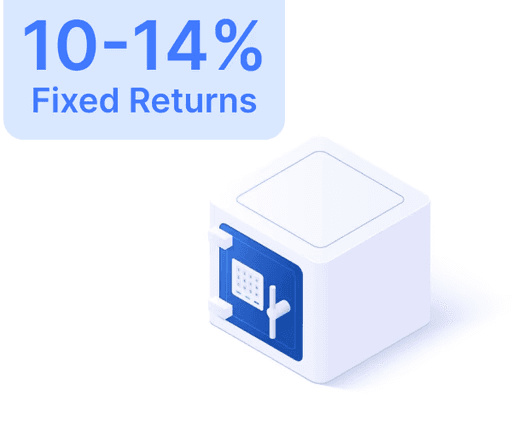
Banking

 Apr 12, 2024
Apr 12, 2024Introduction
Banking encompasses the operations of financial institutions, such as banks and credit unions, which cater to the financial needs of individuals, businesses, and governments. These institutions offer a wide array of services, including deposit-taking, lending, transaction facilitation, and the provision of financial products like savings accounts, loans, and credit cards. The role of banking is pivotal in driving economic activities by facilitating the circulation of money and fostering economic growth.
Functions of Bank
- Providing a secure repository for individuals and businesses to deposit their funds, with the flexibility to withdraw as needed.
- Extending loans to support various purposes such as home mortgages, business expansions, or personal finances.
- Facilitating transactions through diverse payment methods such as checks, debit/credit cards, and electronic transfers.
- Offering foreign exchange services for customers to engage in currency transactions.
- Furnishing safe deposit boxes for the secure storage of valuable items and documents.
- Providing investment opportunities including mutual funds, stocks, and bonds to help customers enhance their wealth.
- Offering convenient online and mobile banking services for customers to manage their accounts, settle bills, and transfer funds seamlessly.
Types of Banks in India
-
Central Bank
The Reserve Bank of India (RBI) functions as India's Central Bank and holds the responsibility for overseeing and regulating the nation's monetary and banking systems.
-
Commercial Banks
Commercial banks are the most prevalent types of banks, encompassing public sector banks, private sector banks, and foreign banks. They offer a wide range of services including savings and current accounts, loans, and investment opportunities.
-
Public Sector Banks: These banks are owned and operated by the government. Examples include the State Bank of India (SBI), Punjab National Bank (PNB), and Bank of Baroda (BOB).
-
Private Sector Banks: These banks are privately owned and managed. Prominent examples are HDFC Bank, ICICI Bank, and Axis Bank.
-
Foreign Banks: These banks have their origins outside India but maintain branches within the country. Examples include Citibank, Standard Chartered, and HSBC.
-
Regional Rural Banks (RRBs): RRBs are designed to cater to the banking needs of rural and semi-urban areas. They are jointly owned by the government, commercial banks, and state governments.
-
Public Sector Banks:
- State Bank of India (SBI)
- Punjab National Bank (PNB)
- Bank of Baroda (BOB)
- Bank of India (BOI)
- Canara Bank
- Union Bank of India
- Indian Bank
- Central Bank of India
- Bank of Maharashtra
- Punjab & Sind Bank
-
Private Sector Banks:
- HDFC Bank
- ICICI Bank
- Axis Bank
- Kotak Mahindra Bank
- Yes Bank
- IndusInd Bank
- IDFC First Bank
- Federal Bank
- Bandhan Bank
- RBL Bank
- South Indian Bank
- Karnataka Bank
- Karur Vysya Bank
- DCB Bank
- Tamilnad Mercantile Bank Limited (TMB)
- City Union Bank
- Lakshmi Vilas Bank
- Nainital Bank
- Dhanlaxmi Bank
- Jammu & Kashmir Bank
-
Foreign Banks:
- Citibank
- Standard Chartered Bank
- HSBC Bank
- Deutsche Bank
- Barclays Bank
- Bank of America
- BNP Paribas
- DBS Bank
- ABN AMRO Bank
- Mitsubishi UFJ Financial Group (MUFG)
- State Bank of Mauritius
- Bank of Tokyo-Mitsubishi UFJ
- Credit Suisse
- Industrial and Commercial Bank of China (ICBC)
- Wells Fargo
- Société Générale
- MUFG Bank
- Bank of Bahrain and Kuwait
- China Construction Bank
- Qatar National Bank (QNB)
-
-
Cooperative Banks
Cooperative Banks, established under the Co-operative Societies Act of 1912, operate under the governance of an elected managing committee. Operating on a non-profit basis, they primarily cater to entrepreneurs, small businesses, and self-employment ventures in urban areas.
In rural regions, their focus lies in financing agriculture-related endeavors such as farming, livestock, and hatcheries. Cooperative Banks are typically categorized into two main types:-
State Co-operative Banks: Acting as a federation of central Cooperative Banks, these institutions serve as custodians of the Cooperative banking framework within a state.
-
Urban Co-operative Banks: Predominantly situated in urban and semi-urban areas, these banks extend credit to smaller borrowers and businesses within community-centric or localized spheres.
-
-
Payment Banks
Payment Banks represent a relatively novel banking model in India, sanctioned by the RBI. These banks are authorized to accept limited deposits, capped at Rs. 1 lakh per customer. Additionally, they provide services such as ATM cards and internet banking.
-
Small Finance Banks
Small Finance Banks primarily target segments of the population that are underserved or unserved, including small businesses and low-income individuals.
Licensed under Section 22 of the Banking Regulation Act 1949, they operate under the governance of the Provisions Act of 1934.
Examples of Small Finance Banks in India include:- AU Small Finance Bank Ltd.
- Utkarsh Small Finance Bank Ltd.
- Fincare Small Finance Bank Ltd.
- Ujjivan Small Finance Bank Ltd.
- Jana Small Finance Bank Ltd.
- ESAF Small Finance Bank Ltd.
- Suryoday Small Finance Bank Ltd.
- Equitas Small Finance Bank Ltd.
- Capital Small Finance Bank Ltd.
- North East Small Finance Bank Ltd.
-
Scheduled Banks
Scheduled Banks are institutions listed under the 2nd Schedule of the RBI Act 1934, necessitating a minimum paid-up capital of Rs. 5 lakhs or more.
-
Non-Scheduled Banks
Non-Scheduled Banks refer to local area banks not enumerated in the 2nd Schedule of the RBI Act 1934.
Types of Bank Accounts in India
Financial institutions provide a variety of bank accounts tailored to meet diverse financial requirements. These accounts differ in their intended use, frequency of transactions, and geographical applicability.
Listed below are the prevalent types of bank accounts in India:- Savings Account: A fundamental account designed for individuals to accumulate savings, offering interest on deposits and permitting limited withdrawals.
- Current Account: Primarily utilized by businesses, this account typically offers minimal or zero interest rates but provides enhanced transaction capabilities, making it ideal for frequent transactions.
- Fixed Deposit Account: In this account, a lump sum is deposited for a predetermined period at a higher interest rate compared to savings accounts, with funds locked in until maturity.
- Recurring Deposit Account: A savings scheme wherein a fixed amount is deposited monthly, culminating in the principal and interest at the end of a specified term.
- Non-Resident Indian (NRI) Accounts: Catering to Indians residing abroad, major types include NRE (Non-Resident External), NRO (Non-Resident Ordinary), and FCNR (Foreign Currency Non-Residential) accounts.
- Senior Citizen Accounts: Tailored for elderly individuals, these accounts offer elevated interest rates and supplementary benefits.
- Salary Account: Employers utilize this account to disburse employee salaries monthly, often devoid of minimum balance requirements.
- Demat Account: Dedicated to electronically holding and trading securities such as stocks and bonds.
- Joint Account: Shared by multiple individuals, commonly utilized for familial or business purposes.
- Minor Accounts: Established on behalf of minors by parents or guardians, with control transferred to the minor upon reaching a stipulated age.
- Corporate Accounts: Employed by companies and corporations to fulfill their banking requisites, encompassing payroll and financial transactions.
FAQs
- What are the types of bank accounts available in India?
Savings, current, fixed deposit, and NRI accounts are common types available, each serving different financial needs.
- How can I open a bank account in India?
Visit a bank branch with valid identification documents like Aadhar card, PAN card, and proof of address, and fulfill any specific bank requirements.
- What is the difference between a savings account and a current account?
Savings accounts earn interest and have limited transactions for personal savings, while current accounts cater to businesses with no interest and unlimited transactions.
- What are the charges and fees associated with banking services in India?
Charges vary but may include ATM withdrawal fees, account maintenance charges, and fees for additional services like chequebook issuance.
- How secure are online banking transactions in India?
Online transactions are secured through encryption, two-factor authentication, fraud detection systems, and liability protection, ensuring a high level of security.




